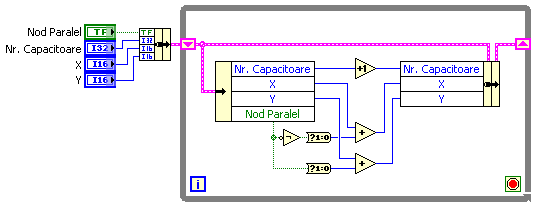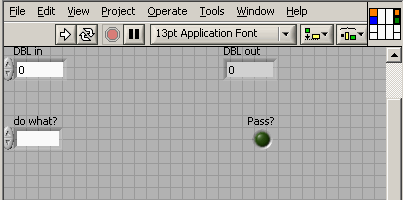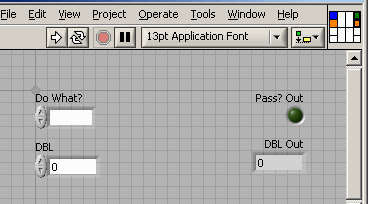-
Posts
951 -
Joined
-
Last visited
-
Days Won
39
Content Type
Profiles
Forums
Downloads
Gallery
Posts posted by jcarmody
-
-
Not everybody searches the LAVA (or NI) forum before asking a question. Here's a gentle way to demonstrate how easy it is to find an answer to a question that's already been asked.
-
-
-
An anagram: "Charles Andrew Ososami" = "Now as melodic harasser"
Charles, do you sing?
From: "Joy! Mad scream."
-
Is it because this is a bot not a real person that you came to me?
-
I understand that the Lava Lounge allows us to "Enter the lounge and discuss anything and everything." and that "Nothing is off-topic and all discussions are encouraged." but this is ridiculous. Charlie is offensive and his bad grammar makes me [sic].
:thumbdown:



 :headbang:
:headbang: 


PS - my member number is not a palindrome, but if you write it forwards and then backwards it inexplicably becomes one. Additionally, the prime factors of 7534 are 2 and 3767 - both of these prime factors are prime. Can you believe it? Finally, divide my member number by pi (my avatar shows my affinity for pi) and you get (approximately) 2398.146682508678919365540546497. This is freaking me out; I'm going to stop writing now...
-
QUOTE (Pollux @ Dec 4 2008, 04:25 AM)
-
You could bundle all of your controls and carry them around in a shift register to get rid of the local variables.
-
Adding error in/out terminals to your subVIs will let you enforce data flow without flat sequences.
-
you can replace the select statements that return a 1 or 0 with a Boolean To (0,1)
-
use another state to sync the front panel indicators to the data cluster when necessary
http://lavag.org/old_files/monthly_12_2008/post-7534-1228391339.png' target="_blank">

-
You could bundle all of your controls and carry them around in a shift register to get rid of the local variables.
-
QUOTE (mballa @ Nov 28 2008, 02:17 AM)
I started a series of http://forums.lavag.org/Auto-wire-FP-to-Connector-Pane-Tool-and-more-t9366.html&view=findpost&p=54874' target="_blank">videos to hopefully clear up any confusion.The first video covers the wire by arrangement function.
Let me know what you think.
Thanks, Mark. I watched the video and have since had no trouble getting the connections I want. The method seemed familiar; the information must have been in another post but it didn't stick until now.
-
QUOTE (matthike @ Nov 26 2008, 12:32 PM)
This has been done before. http://www.google.com/search?hl=en&client=firefox-a&rls=org.mozilla%3Aen-US%3Aofficial&hs=yrO&q=site%3Aforums.ni.com+tetris&btnG=Search' target="_blank">Search the LabVIEW forum and you'll find a plethora of information.
Jim
-
-
QUOTE (miab2234 @ Nov 24 2008, 09:54 AM)
Hi Guys,I want to go further with the programm and i want to make an LED showing EX:ABC and continous still i press Stop
I don't know what you mean by "make an LED showing EX:ABC". I looked at the VI you attached and found it strangely familiar
 ... All you did was replace the boolean indicator and translate the comments.
... All you did was replace the boolean indicator and translate the comments.Jim
-
QUOTE (miab2234 @ Nov 23 2008, 03:30 PM)
It do but the 2. Problem is it stops at 2. LED.But i want that it continuous.How can i do that ?Miab,
It stops at 2 because you're comparing the value in the shift register (initialized at 1) with a constant 1 inside the loop. This loop will only execute one time and, even if you changed this comparison, it will never become a 2-D array of LEDs that go on and off one by one. I'm not sure where you were going with your VI so I wrote my own!
 The code is commented so you might be able to see what I had in mind (I have good days, and I have bad days
The code is commented so you might be able to see what I had in mind (I have good days, and I have bad days  ). This approach is limited, but I don't know what your requirements are so I didn't spend too much time on it. Let me know if you need more than 64 elements in your 2-D array and I'll try to help you figure it out.
). This approach is limited, but I don't know what your requirements are so I didn't spend too much time on it. Let me know if you need more than 64 elements in your 2-D array and I'll try to help you figure it out.Jim
-
-
-
QUOTE (mballa @ Nov 21 2008, 01:00 PM)
-
It's fantastic. I'm glad to hear that you're still developing it.
-
Sometimes it crashes LabVIEW. I've gotten into the habit of saving all before using it. I'm not sure, but I think it only crashes when I don't save (it figures). (It didn't crash when I made these screenshots tonight, though, and I didn't save first.)
-
My only complaint is with how the terminals are picked. See images below:
This example has an enum that I'd like to wire to the top/left terminal as show, but I never want the DBL in/out to be in the bottom row. (I'd only like this arrangement if those were error clusters.) I got this using "By Arrangement".
When I used "By Pairs" I got this:
This is closer, but it took the pairing concept too far (IMO) by putting the DBL in/out on top.
I want the "By Arrangement" front panel with the "By Pairs" terminal selection, like this:
Jim
PS - I just noticed that the boolean indicator and DBL control were renamed.
PPS - In another "BTW", I use (and like) your icon editor...
-
It's fantastic. I'm glad to hear that you're still developing it.
-
QUOTE (asbo @ Nov 20 2008, 09:55 AM)
I've seen this before - it's downright epic. What I can't wrap my head around though is why it was ever considered a good idea to move a semi with the trailer still open.That trailer has barn doors, not a roll-up door; you have to pull it away from the dock to close them. It would have been a good idea to block the carts in, though.
-
I've done this but I still get lousy connector panes when I Edit->Create SubVI. What have I done wrong?
Jim
BTW - I like the SubVI fixer tool :thumbup:
-
This topic reminds me of a joke.
Q: What's a metaphor? A: To keep cows in.
Q: What's a semaphore? A: ...
I Googled "sema" but couldn't find anything useful.
-
-
QUOTE (kmc @ Nov 12 2008, 10:48 AM)
Attached, but you should really install the entire package from JKI.
From the comment on the VIs front panel:
QUOTE (kmc @ Oct 30 2008, 12:45 PM)
I NEED TO SUBMIT THIS IN A WEEK...This might be tough...
Jim
-
I'd like to add one word of caution. Although these are all good questions to prepare you for the CLAD exam, they only scratch the surface of what you may face on the actual exam. I took the CLAD last year after practicing the online test many times; I even took screen shots of each question so I could go back and wire up every block diagram and study every conceptual question. In the end, when I sat down in front of the testing computer the first question didn't look like anything I saw during practice. That's fine, I thought, there are 39 more questions to go. Then, the second one was unfamiliar too. And the third... That how it went; I think that only a one or two questions were similar to ones I had seen during practice.
So, I say to take the practice exams as many times as you can. Study the questions off-line (asking for discussion here is a good idea) but go through the Basics I & II material until you're very familiar with it. Also, when you're taking the actual test, take advantage of the testing software's ability to "mark" a question to review later. The actual CLAD isn't like the practice tests; you can keep going back to a question until you're satisfied with the answer (or, until your time runs out). I kept going through the questions until I had un-marked all of them. Keep in mind the way folks here are answering the questions; you can often dissect the grammar for clues to what the questioner has in mind as the correct answer.
Good luck and happy wiring!

Jim
Here's a list of things that I wasn't prepared for:
. Order of events - vi mouse down, boolean mouse down, boolean value change?
. disadvantage of saving data in ASCII file
. coercion dot means?
. expression nodes (I didn't even know what this was!)
. sub-vi remains in memory, even when not displayed, if there are...?
. things auto-indexing does
. default auto-indexing behavior of for & while loops
. date/time formatting (that pesky %d%M stuff)
. weakly-typed vi reference definition (this one threw me for a loop)
. ring controls accept vs. enumerated list
. 1000/0 into for-loop 'N' results in how many iterations? (wire it for yourself)
. stacked sequence advice
. multiple X & Y axes on graphs & charts
. when 'wait until next ms multiple' begins counting
-
QUOTE (shoneill @ Nov 3 2008, 04:38 PM)
No, thanks. I get cut on sharp things.
QUOTE (jzoller @ Nov 3 2008, 10:55 AM)
I had the attached laying around, hopefully it's helpful.Thanks. There's sure an awful lot going on in there.
I'm going go forward with Python. I'm not sure what would be easier, but I'm more interested in learning Python than how to use .net in LabVIEW. I played around at lunch today and wrote open, query and close VIs so I have enough to get started and a clearer vision of where I want to go.
Thanks to both of you for your suggestions.
Jim
-
-
Hello,
I've read a few posts about using SQLite in LabVIEW and haven't found the library to replace the broken link I mentioned here. My former employer had some useful VIs, but they are proprietary (and, being that they're my former employer, I no longer have a right to use them). So... I've wanted to write some wrapper VIs to use SQLite without ODBC and the NI DB toolkit (it works fine) and have made some initial progress. I first tried to use a Call Library Function node to access the functions inside SQLite3.dll directly, but got lost right away. I had seen a post where some work was started using CVI, but I didn't understand why a C wrapper was needed around the dll to use it in LabVIEW. What I got out of this, and a few hours of Googling, was that it was needed and I was missing something fundamental.
Anyway, in a moment of inspiration I decided to use a Python Script node to access the database and was able to execute a SELECT query and also divine some schema information. I haven't tested it extensively yet (it's very much preliminary work and a bit sloppy), but I've just begun and would like some feedback as to whether I'm way off base or if this would be useful. I'm very interested in doing this, especially if others would be able to use it. I'll appreciate any suggestions you make.
Thank you,
Jim







Alfa String
in LAVA Lounge
Posted
QUOTE (alfa @ Dec 15 2008, 03:01 AM)
How did he know it was the last year of his life?